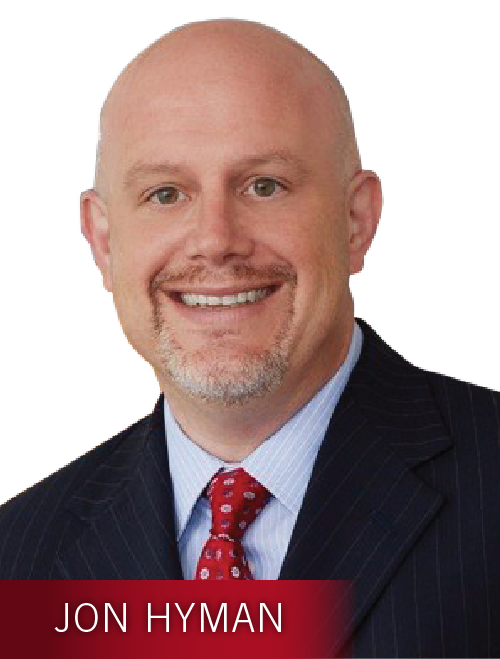The Health Enhancement Research Organization recently released a report listing 24 key elements employers can use to create a healthy workplace culture. Many them sound like what my sources often tell me, and a few of them stuck out to me, notably having a “sense of community.”
Taking a step back, I recently started attending a yoga studio near my new apartment as a way to pass the time. It’s $30 for two weeks of unlimited classes, sure, why not? The first thing that stuck out to me was a poster on the studio wall. “How to Build a Community” it read in big bold letters. Forming a community-based habit was one reason I joined these classes, after all. The studio is walking distance from my apartment and my grocery store is on the walk back from class.
Feeling a part of a community isn’t a passive accomplishment. It’s something to search for. One friend pursued her dad’s Lutheran church after years of going to services at a different domination. Another joined a tap dance crew. It takes energy, time and true interest. Some people need it to feel satisfied; others don’t need it at all. It’s very personal.
The poster listed an array of ways to start building a community, including, “Turn off the TV,” “Leave your apartment,” “Ask a question,” “Support neighborhood schools,” “Sit on your stoop” and more suggestions. Reading it got me thinking how one could incorporate these community-building tips in workplace wellness.
A sense of community, at least on a small scale, is common in most workplaces, according to Dan Krick, a member of the HERO Culture of Health Study Committee and the vice president of organizational development at Hexagon Lincoln. A healthy sense of community can lead to many positive outcomes, like higher work performance, lower turnover and a stronger acceptance of company initiatives such as wellness, quality or safety, he added.
For organizations interested in creating a sense of community, Krick suggested a valuable starting point: ask why. Why do you want to create a sense of community? “It may sound silly, but companies that do this well will typically form a strong sense of community because it ties directly to their purpose or values of their organization,” he said.
Once you’ve addressed why, he suggests that companies “hard-wire” programs and practices that support a community. For example, in the onboarding process a company could discover people’s interests and make immediate connects based on what people have in common. “The biggest catalyst for building a strong sense of community is creating forums for people to connect,” Krick said. “That can be social media, and good old-fashioned events that bring people together for discovery of interests and matching of values.”
Meanwhile, that poster gave me a few ideas that I believe fit into workplace wellness. Turn off the TV? Translation: Employees, it’s OK to put your computer on sleep mode. Leave your apartment? That could mean get out of your cube when you can. Maybe that means taking a walk at lunch. Maybe that means that attending conferences, classes or networking events outside of work to help you develop yourself.
Maybe the workplace will be the community employees turn to for staying healthy and connecting with other people. Great! Maybe other people rely on a different community for that, and that should be acceptable, too.
Another one of these 24 elements that help create a healthy workplace intrigued me as well: recruitment and selection. My first thoughts upon reading this: If you only recruit and select people who fit into your culture of health, are you discriminating against people with health issues or against people who simply wouldn’t have interest in joining a workplace wellness program for whatever reason?
It also brought to mind a colleague’s article titled, “The Pros and Cons of Hiring for Cultural Fit.” It’s a timely topic that dives into the recruiting and hiring process and explains the complexity of hiring someone because they’d fit in your culture.
That being said, I asked Krick for an explanation. He said he prefers the word “selection” over “hiring” because it’s more intentional. “With every selection a company is adding or detracting to its culture, so ultimately adding or detracting to every result area — revenue, profits, safety, culture, wellness, you name it,” he said. He added that the right selection decision is important for both the individual and the company, and that companies owe it to the candidate to we accurately illustrate what kind of organization they might be joining.
“We actually do an injustice to the person being recruited if we select them into a strong culture of well-being when they have a value system that does not align,” he said. “I don’t view that as discriminatory, but rather as respecting that individual enough to not put them in a culture that will not fit them.”
Andie Burjek is a Workforce associate editor. You can find Workforce on Twitter at @workforcenews and Andie at @andie_burjek. Comment below or email editors.workforce.com.
















 Webasto’s solution to building a new culture was separated into several phases. First, the company identified a road map of desired behaviors by asking every employee what their cultural priorities were. The guide, called “Our Compass,” was to be incorporated into the organization’s core values because it inherently included the cultural needs of all employees. Then, Webasto set out to create an environment that encouraged listening.
Webasto’s solution to building a new culture was separated into several phases. First, the company identified a road map of desired behaviors by asking every employee what their cultural priorities were. The guide, called “Our Compass,” was to be incorporated into the organization’s core values because it inherently included the cultural needs of all employees. Then, Webasto set out to create an environment that encouraged listening.
